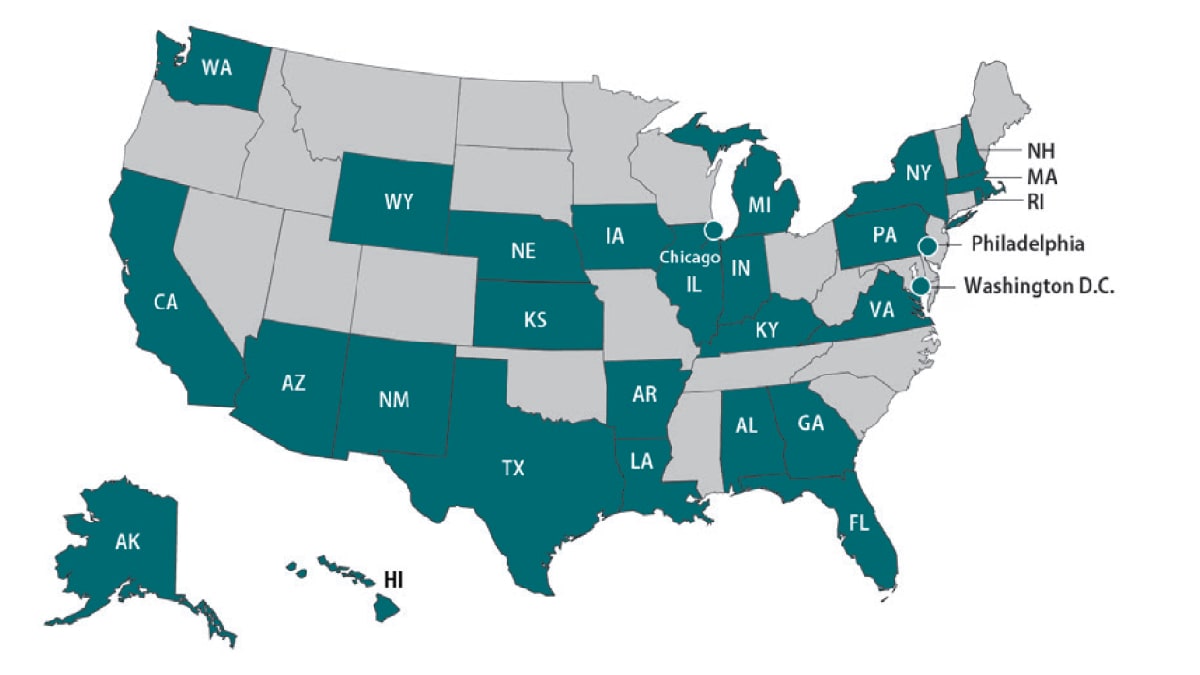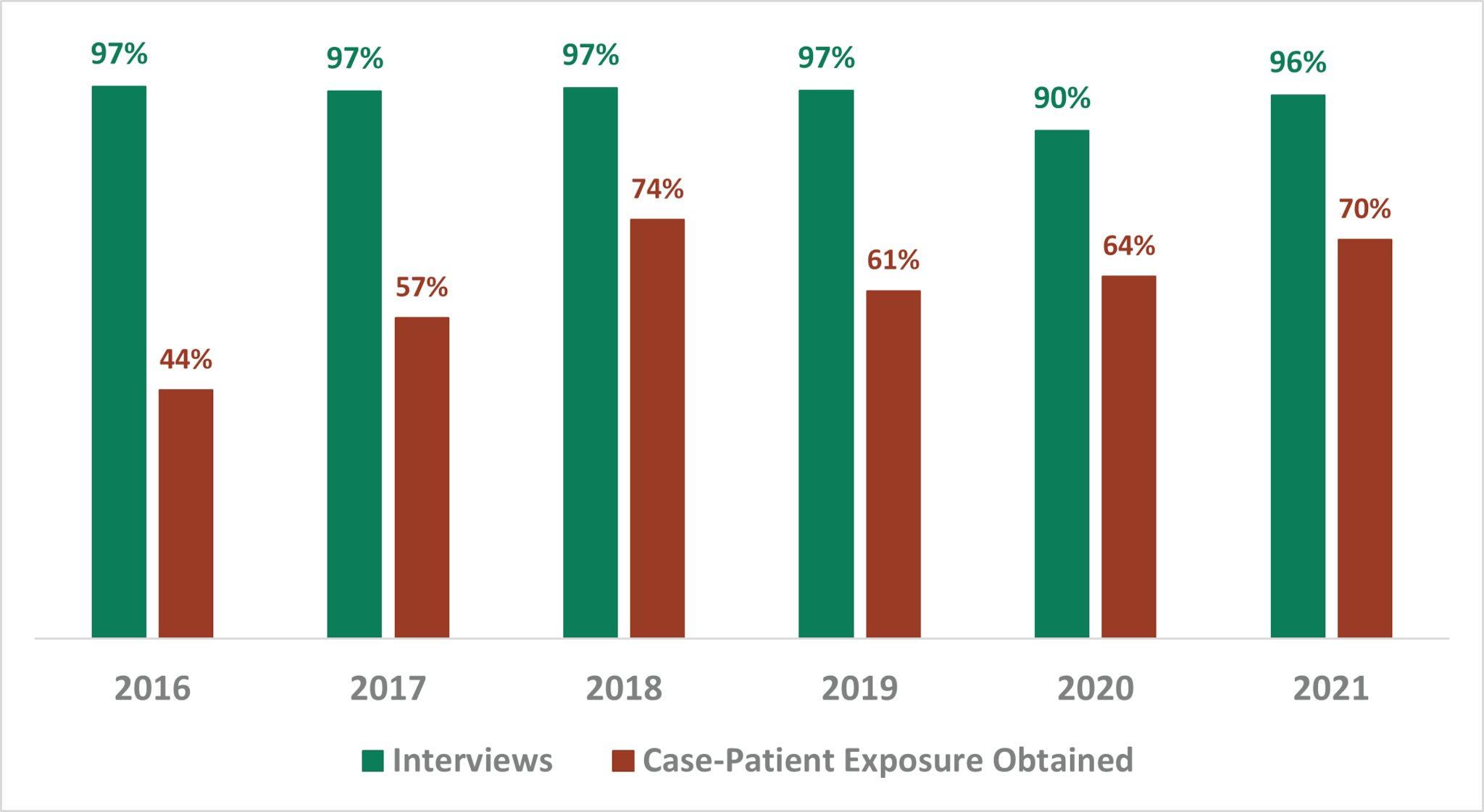What to know
OutbreakNet Enhanced (OBNE) is a Centers for Disease Control and Prevention (CDC) program that provides support to state and local health departments to improve their capacity to detect, investigate, control, and respond to enteric disease outbreaks. OBNE started in August 2015 with 11 sites. The program expanded and there are now 29 participating sites.

Highlights
In 2021, state and local health departments continued to be significantly impacted by the COVID-19 pandemic. Even as OBNE staff transitioned back to enteric work, they faced the challenge of balancing enteric and COVID-19 response work. Due to limited capacity, many OBNE projects and activities remained paused. OBNE sites leveraged their enhanced capacity to conduct routine work and adapted workflows to navigate enteric investigations during a global pandemic.
Many OBNE sites continued to use student teams to conduct routine outbreak response activities. Student teams, which were critical to many state and local health departments, conduct enteric interviews and support investigations. Additionally, OBNE sites relied on existing strong partnerships with the Integrated Food Safety Centers of Excellence (Food Safety CoEs). Food Safety CoEs assisted with enteric diseases interviews and new staff training, helping OBNE staff balance enteric and other response work.
OBNE sites showcased their work and provided updates virtually at national meetings and conferences. This included the Council of State and Territorial Epidemiologists (CSTE) Conference and Integrated Foodborne Outbreak Response and Management (InFORM) Regional Meetings. Additionally, OBNE sites exchanged strategies on transitioning back to enteric disease work on monthly program calls. A joint OBNE/FoodCORE success story was written on leveraging enhanced resources for enteric disease investigations while simultaneously supporting the COVID-19 response. OBNE sites published additional success stories highlighting OBNE program activities, including:
Program performance
OBNE performance metrics have been collected since 2016 to document the burden, timeliness, and completeness of enteric disease outbreak activities. Sites report metrics annually on both laboratory and epidemiologic aspects of outbreak investigations. Metrics are reported for Salmonella, Shiga toxin-producing Escherichia coli (STEC), and Listeria (SSL metrics), and optionally for Shigella and Campylobacter. The metrics are revised as needed to best meet program needs.
Select 2021 Metrics for Salmonella, STEC, and Listeria (SSL)
- Over 41,000 cases reported
- Over 950 clusters detected
- Average of 3.2 days to initial interview attempt
From 2016 to 2021, OBNE sites increased the percentage of primary SSL isolates with WGS testing.

In 2021, the percent of isolates with WGS testing was highest for Salmonella. Salmonella also had the highest average number of isolates received per site, 1136.
During 2016-2021, OBNE sites interviewed cases in nearly all outbreak and cluster investigations. Additionally, sites increased the percent of all SSL cases that were interviewed and had a case-patient exposure obtained from 44% in 2016 to 70% in 2021.

